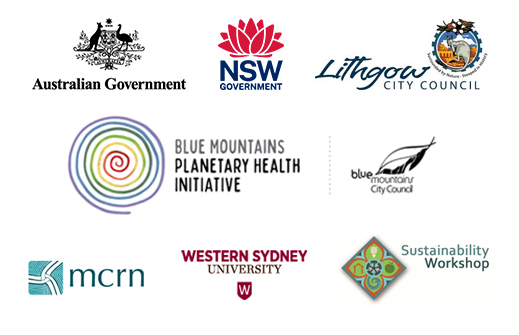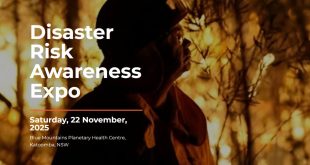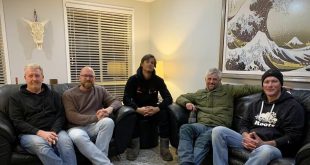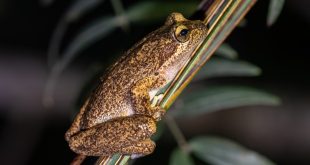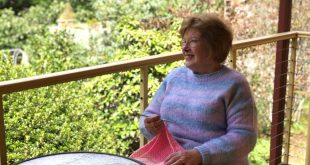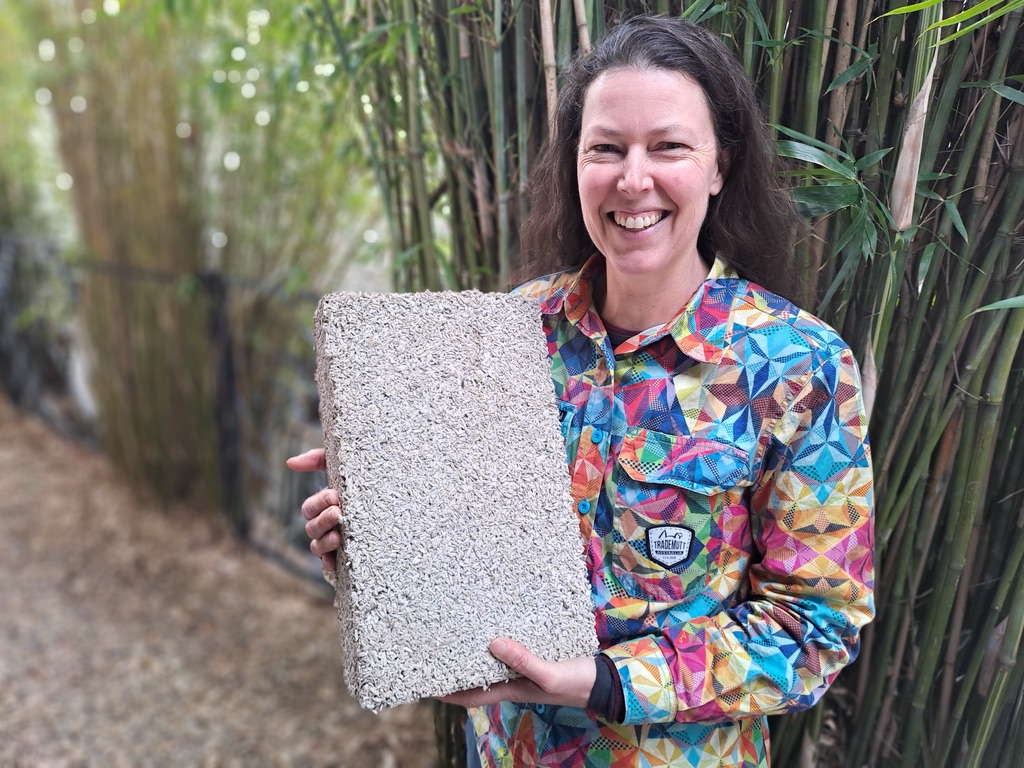
Kirstie Wulf of Shelter Building Design holding a hempcrete block (Belle Butler)
Story by Belle Butler
As we rethink how to live in a warming world, building designers like Kirstie Wulf in Hazelbrook are exploring new fire-resistant building materials like hempcrete. In 2015 Kirstie received the National Building Designers Association Award for her first hempcrete home and she’s been designing them ever since.
Meeting building designer Kirstie Wulf in her Hazelbrook home was a bit like walking into someone’s living room on Christmas morning. Kirstie exuded an energy of barely contained excitement, like she had this secret gift that she couldn’t wait to share. The gift was, in fact, her knowledge about hempcrete, a building material that seems to tick all the boxes you could possibly throw at it.
Key Points:
- Hempcrete is fire-resistant, offers great thermal insulation and is renewable, recyclable and compostable.
- Industrial hemp differs from marijuana in that it has a low percentage of the psycho-active property THC and is now legal to build with.
- Hempcrete can be retrofitted and is easily installed in standard building design.
If you haven’t heard of hempcrete, that might be because stigma and legal barriers around growing industrial hemp in Australia have led to relatively slow uptake of the product. Industrial hemp differs from marijuana in that it has a low percentage of the psycho-active property THC. Nevertheless, growing it for commercial or research purposes wasn’t legalised until 2008 in NSW, and 2017 Australia-wide.
Hempcrete is a mixture of a lime-based binder and hemp hurds, which come from the woody inside of the hemp stalk. Conveniently, this is a by-product of the other uses of the plant. Freshly made, it has a muesli-like texture and is placed in a formwork surrounding a standard timber frame. The following day the formwork is removed and once dry the hempcrete walls can be rendered.
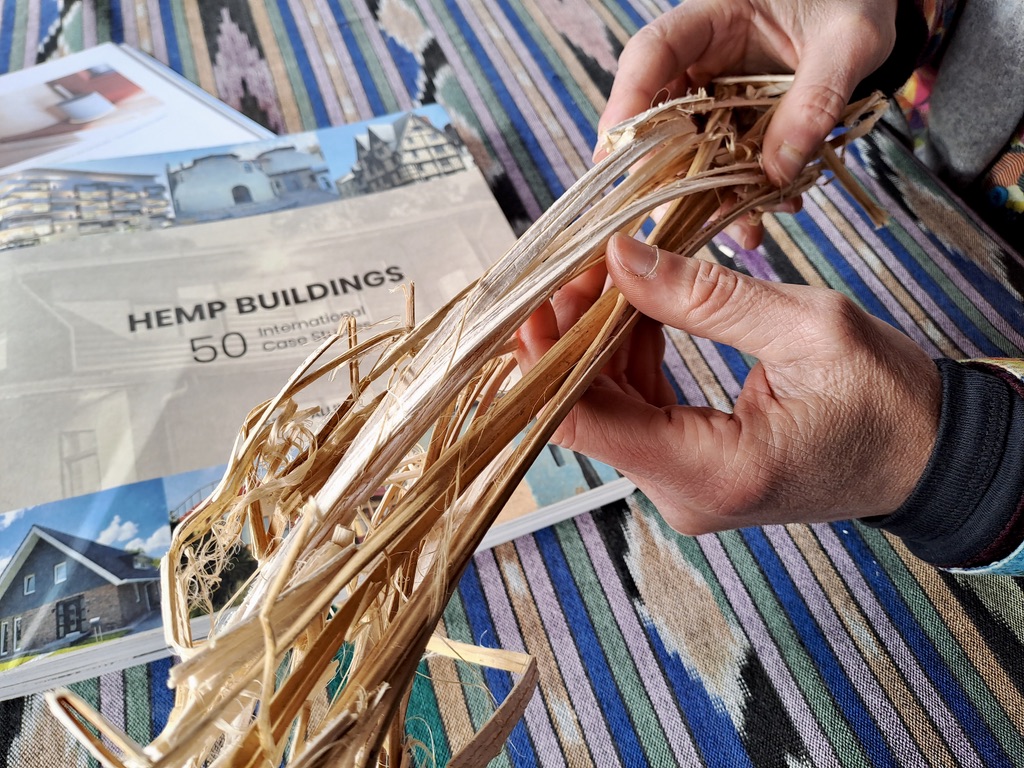
Hemp hurds come from the woody inner stalk of the hemp plant (Belle Butler)
“It’s a lightweight, vapour-permeable and insulating material that is resistant to both fire and pests,” said Kirstie, who is the director and owner of Shelter Building Design as well as a Certified Passive House Designer. “If you are looking for a low embodied energy, healthy and natural building material with great performance, then look at using hemp in your next build.”
Hempcrete v Blowtorch: Kirstie Wulf from Shelter Building Design (supplied)
Kirstie highlights many reasons behind her decision to use hempcrete:
- Hempcrete is fire resistant. It is rated up to BAL FZ, the highest bushfire rating.
- It is a carbon neutral product with low embodied energy. From plant to harvest, hemp takes 3-4 months to grow, with low water, minimal fertiliser and little to no pesticide requirements. The plant takes in carbon while growing, then locks it up in the building material. Once set, the lime component of hempcrete continues to absorb carbon dioxide from the atmosphere.
- It has excellent thermal performance, resulting in diminished or no need for heating and cooling.
- Hempcrete is vapour permeable. This means that it regulates humidity by absorbing water vapour and releasing it.
- Hemp is a renewable, natural material resulting in a product of low toxicity. Being natural, it can eventually be composted, or recycled by crushing and mixing 10 % of older material into a new mix.
- Hempcrete promotes healthy indoor air quality: the lime prevents mould and the vapour permeability results in no condensation.
- Because of how it is used in construction, it results in well-sealed buildings with no gaps, preventing temperature loss as well as reducing fire risk due to ember encroachment.
- It acts as excellent acoustic insulation.
- Because of high silica and lime content, hempcrete is vermin and termite resistant.
- It boasts design flexibility that allows owners to choose the look they are after.
- It is achievable for owner-builders to use in DIY projects.
- It uses a standard timber frame, so it is compatible with standard building practices, easy to run services through, and accessible to conventional builders.
- It can be retrofitted in existing buildings.
The story of Kirstie’s passion for hempcrete started 21 years ago, well before the product was known or accessible in Australia. She had engaged a builder and was actively involved in the build of her mudbrick house in Hazelbrook. “I knew nothing about building at the time and it was a huge learning curve,” she said. “But I discovered I loved building. I built myself a shed in the backyard, got into natural building materials, did some workshops with the Earth Building Association, and then I finished all of that and thought, ‘oh, I want to keep doing this.’ So I looked up online and saw that you could do a building designers course through TAFE.”
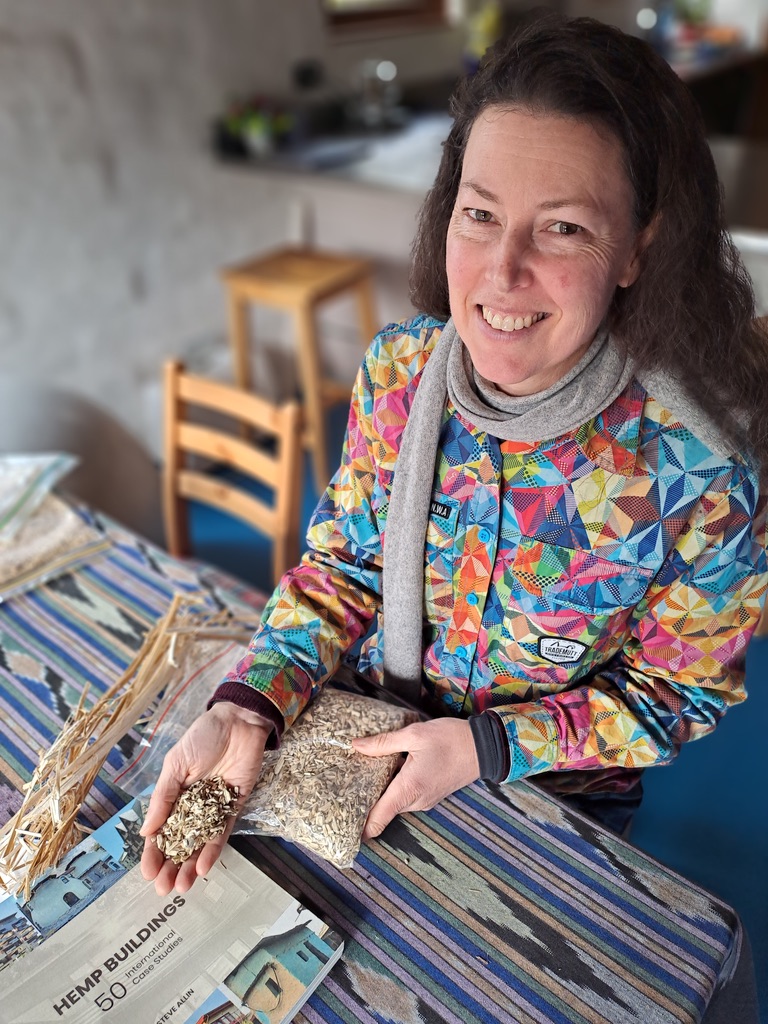
Kirstie holding hemp hurds used to make hempcrete (Belle Butler)
At the time, Kirstie was working as a lawyer and studying for a specialist accreditation exam which had a 50% fail rate. “I thought, ‘look if I don’t pass this, I’ll do my building designers course and change my career.’ Then when I passed, I was slightly disappointed because I really wanted to do building design. So I went ahead and did it anyway.”
Kirstie’s self-determination, a quality that was evident during our interview, then led her to the discovery of hempcrete. She had bought land on the South Coast at Culburra Beach and wanted to put her newly acquired knowledge to the test by building her own home. “I wanted to use natural building materials but wanted something that was easy, that I could do myself, and had good insulation,” she said. “I stumbled across an article on hempcrete, in Owner Builder magazine. I liked the idea that, unlike some other natural building materials, it is a chemical rather than physical set: once it is set, it will not go anywhere. So it was the good insulation, that it was a natural material, had low embodied energy, had a bit of thermal mass to it, it was light-weight and easy to do that attracted me to the material. I thought, ‘I’ll give that a go.’”
At the time of the build, 2012, Kirstie’s was one of the first hempcrete homes in Australia. She documented her efforts in a blog that gained over 20,000 followers worldwide: culburrahemphouse.blogspot.com, and the completed home received the National Building Designers Association Award in 2015. “Towards the end of the build, I thought, ‘I love this, I just want to keep doing this.’ So I went back to TAFE, did some more qualifications, got my diploma in building design, and went, ‘that’s it, I’ve got to do a career transition and do this full time.’”
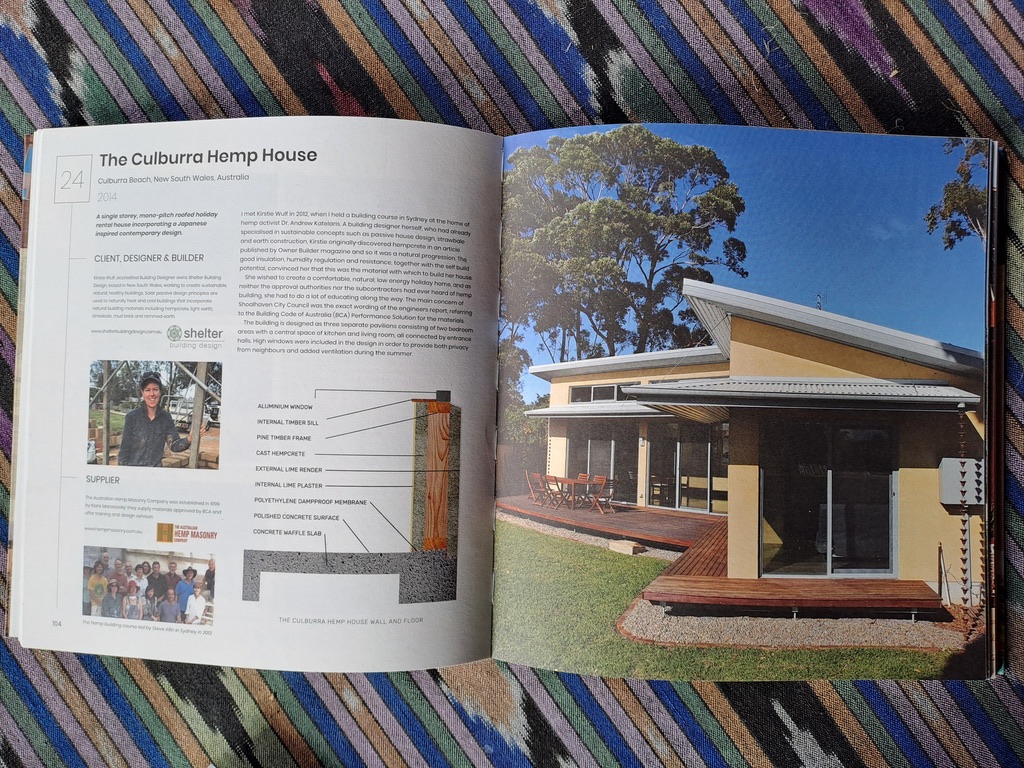
Kirstie’s Culburra Hemp House as displayed in “Hemp Buildings – 50 International Case Studies” by Steve Allen (Belle Butler)
Kirstie later started up her own business, Shelter Building Design, with the tagline: Designing a sustainable future, one house at a time. The company provides a number of sustainable building solutions using natural building materials, but Kirstie’s particular passion for hempcrete sees her advocating for wider use of the product. She has conducted workshops to guide owner-builders on their own projects, overseen a number of builds, started up the Hemp Building Australia Facebook page, which boasts over 10,000 members, and recently co-created the Hemp Building Directory: a one-stop website that links up building designers, architects, engineers, builders, installers, suppliers, and certifiers working with hempcrete and anyone wishing to build with it. “My view is that the more people know about it the more people are going to want to do it.”
Two things that impressed me most about this product: its propensity to withstand fire and the fact that it can be retrofitted in existing buildings. Given the predictions of more frequent and intense fires to come, Kirstie suggests that hempcrete offers security and safety for those building in high-risk areas. We also have existing housing stock that doesn’t have to be knocked down to benefit from using this product.
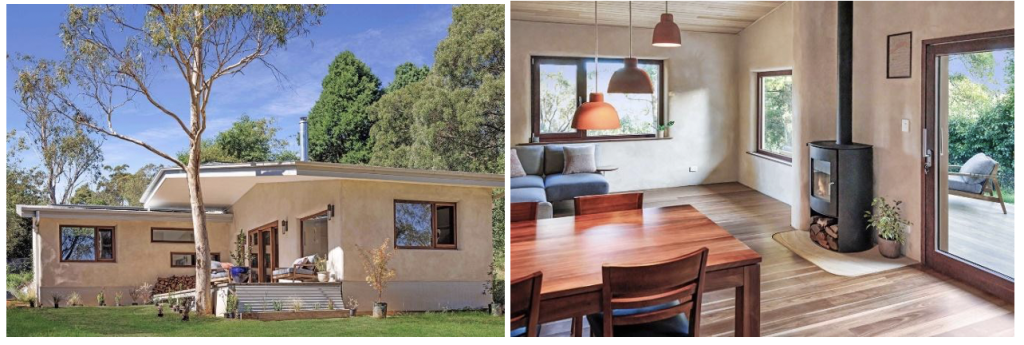
- LEFT: This Blackheath home met the highest bushfire rating, BAL FZ, by using hempcrete. (supplied)
- RIGHT: Interior of a Blackheath hempcrete home. Walls can be finished in soft or sharp style, making hempcrete flexible to suit different design tastes. (supplied)
Leaving Kirstie’s house after the interview, I still felt like it was Christmas morning and I’d just been given an exciting new gift. As I live with my family in an old Blue Mountains home with all the old-Mountains-home-problems you can possibly imagine, I have often felt bereft of solutions that don’t involve knocking down and rebuilding, or moving house. Now it seemed there was another option. I went home, did some further research and announced to my family that, at some point, we would be undressing the old fibro and weatherboard rags of our home and giving it some fresh new clothes in hempcrete.
Take Action:
- Learn more about hempcrete via the Hemp Building Australia Facebook page and the Hemp Building Directory
- See more examples of hempcrete homes at Shelter Building Design
- Consider doing a workshop with the Earth Building Association
Share this article:
This story has been produced as part of a Bioregional Collaboration for Planetary Health and is supported by the Disaster Risk Reduction Fund (DRRF). The DRRF is jointly funded by the Australian and New South Wales governments.
